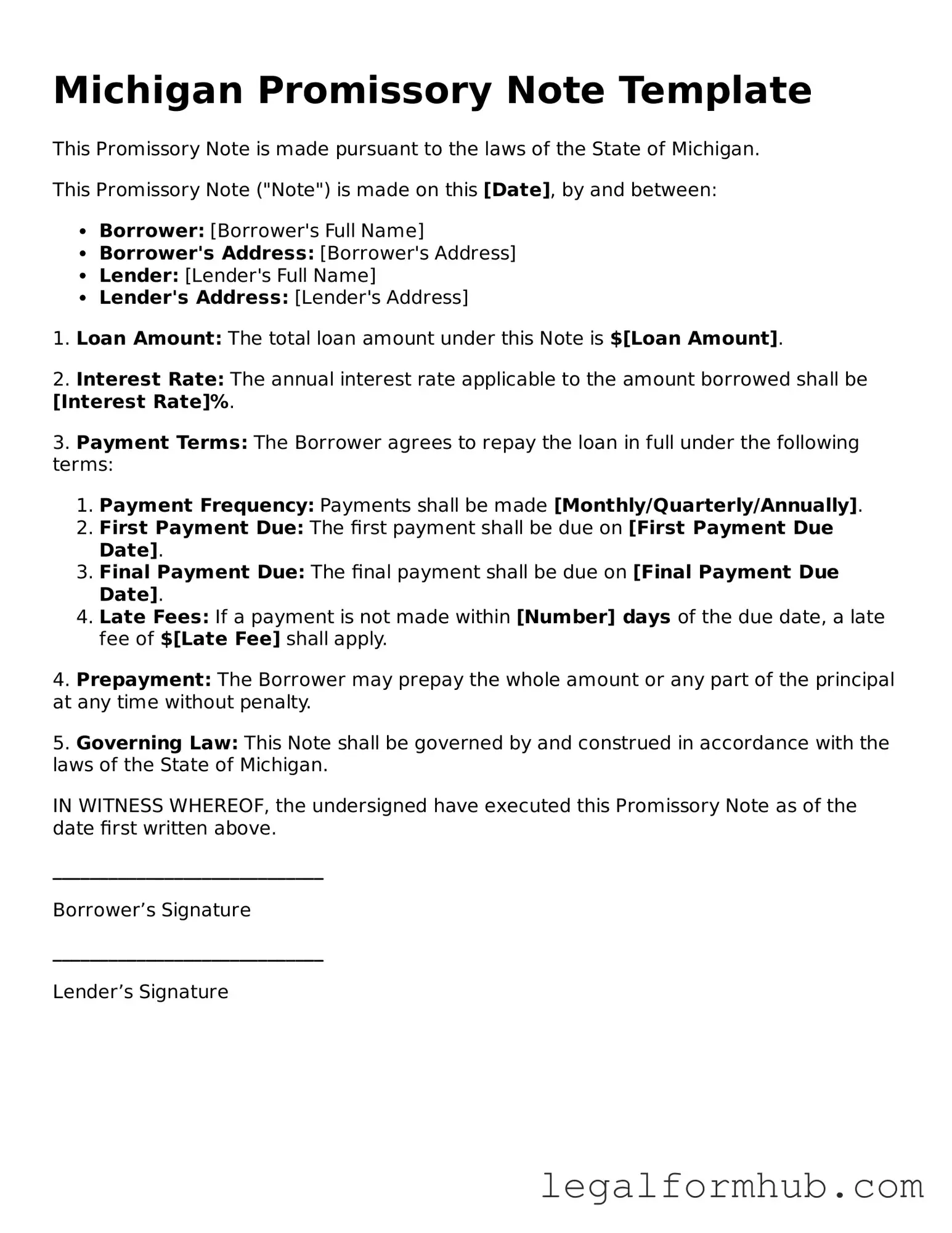The Michigan Promissory Note form bears similarities to the Loan Agreement, which outlines the terms and conditions under which a borrower receives funds from a lender. Like the promissory note, a loan agreement specifies the amount borrowed, the interest rate, and the repayment schedule. However, a loan agreement often includes additional details, such as collateral requirements and the rights of both parties in the event of a default. This comprehensive nature makes it suitable for larger loans or more complex financial arrangements.
Another document that shares characteristics with the Michigan Promissory Note is the IOU, or informal acknowledgment of debt. An IOU is a simple, straightforward document indicating that one party owes money to another. While it does not typically include the same level of detail as a promissory note, such as interest rates or repayment terms, it serves a similar purpose by establishing a record of the debt. Both documents create a sense of obligation, although the IOU is generally less formal and may not be enforceable in a court of law.
The Secured Promissory Note is also akin to the Michigan Promissory Note, with one key distinction: it is backed by collateral. In this case, the borrower pledges an asset, such as property or equipment, to secure the loan. If the borrower defaults, the lender has the right to claim the collateral. This added layer of security can make lenders more willing to extend credit. Both documents outline the terms of repayment and the borrower's promise to repay, but the secured note provides additional protection for the lender.
The Mortgage Note shares similarities with the Michigan Promissory Note, particularly in the context of real estate transactions. A mortgage note serves as a written promise to repay a loan used to purchase property. Like a promissory note, it specifies the loan amount, interest rate, and repayment terms. However, the mortgage note is tied directly to the property itself, allowing the lender to foreclose on the property if the borrower defaults. Both documents create a legal obligation, but the mortgage note is specifically designed for real estate financing.
When it comes to navigating the financial landscape, many individuals may encounter various forms and agreements, and understanding them is crucial. For instance, the EDD DE 2501 form is specifically designed for those in California seeking disability benefits. To successfully complete this essential document, you can refer to resources like Fill PDF Forms for guidance, ensuring that all necessary information is provided and that you can access the financial support you need during challenging times.
Lastly, the Personal Guarantee is another document that resembles the Michigan Promissory Note. A personal guarantee involves an individual agreeing to be personally liable for a debt incurred by a business or another party. This document is often used when a lender requires additional assurance that the loan will be repaid. Similar to a promissory note, a personal guarantee outlines the obligation to repay the debt. However, it shifts the responsibility from the business to the individual, providing an extra layer of security for the lender.
